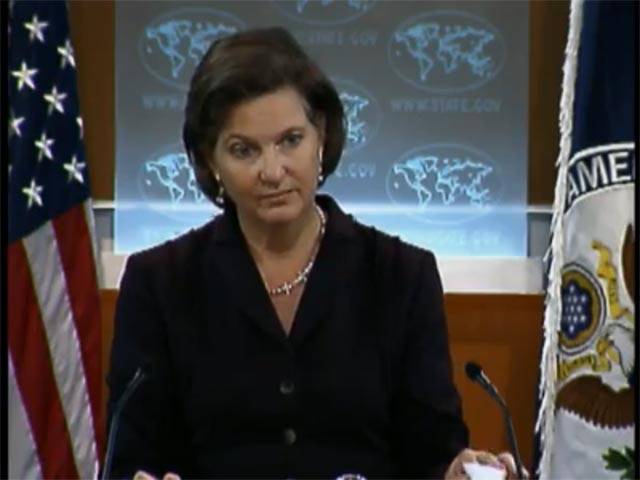WASHINGTON - The United States has refused to give in to an Indian government demand that official US maps show Jammu and Kashmir as part of India, saying the Himalayan state is a disputed territory that must be resolved peacefully.
Following a strong Indian protest against previous maps showing Azad Kashmir as part of Pakistan, the State Department on Wednesday posted on its website and travel-related sites what it called were new and corrected maps of India. But the new maps still reflects the unresolved nature of the boundaries, including the Line of Control in Kashmir.
"There is an asterisk on this set of maps, which is also consistent with our standard policy when we are trying to make clear that there is a dispute here, State Department Spokesperson Victorial Nuland said at the daily news briefing. She was responding to a series of pointed questions from Indian journalists.
"There is an asterisk on this set of maps, which is also consistent with our standard policy when we are trying to make clear that there is a dispute here," Nuland told reporters. "And it says that the names and boundary representations are not necessarily authoritative, meaning that they are in dispute and we are not taking a position." the spokesperson clarified.
The spokesperson's remarks echo Pakistan's long-maintained stance that Kashmir remains an unresolved dispute, which needs to be addressed peacefully.
When a journalist pointed out that India claims the region to be its integral part, and does not view it as a disputed territory and that the U.S. position acknowleding Kashmir's disputed status would not please New Delhi, the spokesperson replied:
"Well, again, it is consistent with longstanding U.S. policy."
The new maps, she explained, reflect the fact that the United States "takes no position on the dispute and urges all the parties to seek a peaceful resolution to resolving the claims."
"What you’ll see on the maps is consistent with what the U.S. geographic position has been consistently, that there is a dashed line representing the 1972 line of control, reflecting Kashmir’s unresolved status. We neglected to actually label that dotted line in the last round of maps. It has now been labeled," she added.
Questioned whether Washington favours international intervention to resolve the lingering conflict or Pakistan and India should continue with bilateral efforts towards settlement of the South Asian conflict, the spokesperson responded:
"The U.S. believes that this issue is best solved in bilateral channels. We’ve been very supportive of the work going on in bilateral channels, and we’d like to see it continue."
Friday, April 26, 2024
US regards Kashmir as disputed territory, but takes no position

GB's Ghanche, Kharmang districts need to be promoted as tourist hotspots
8:27 AM | April 26, 2024
PM approves in principle reforms in power sector
April 26, 2024
Not on my watch, top judge rules out meddling in judiciary
April 26, 2024
SC orders removal of barriers outside buildings in Karachi
April 26, 2024
Pak-Iran gasline project to be completed: Kh Asif
April 26, 2024
Economic Challenges
April 26, 2024
No Compromise
April 26, 2024
Strength and Solidarity
April 26, 2024
Musk vs Australia
April 25, 2024
Reforming Rehab
April 25, 2024
Photon power
April 26, 2024
Justice prevails
April 26, 2024
Ending animal suffering
April 25, 2024
AI governance
April 25, 2024
AI concerns
April 25, 2024
ePaper - Nawaiwaqt
Advertisement
Nawaiwaqt Group | Copyright © 2024





